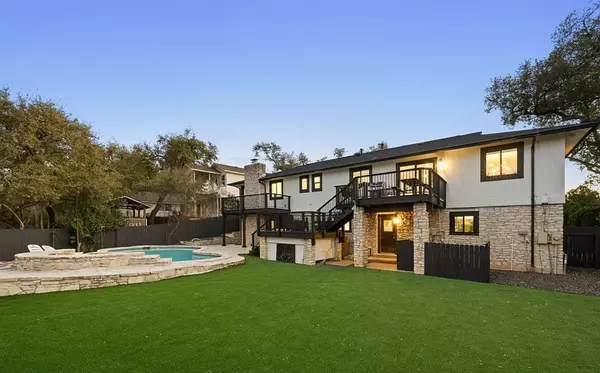Is 3% the New Normal? What Sticky Inflation Means for Mortgage Rates and Your Buying Power
TL;DR
The Fed is still chasing 2% inflation but the market keeps landing closer to 3%. If that becomes the new baseline, mortgage rates likely settle higher than the low-4s we all loved. Think mid-5’s to low-6’s as the new range with occasional dips. For Buyers and Sellers, this means a more tactical approach is needed: price with precision, lock the valleys, and use tools like buydowns, ARMs, and credit optimization to stay competitive. In this climate, timing, prep, and strategy are everything.

The Inflation Target the Fed Can’t Quite Hit
The Federal Reserve has a magic number in mind: 2%. That is the official inflation target. But lately, the numbers keep circling closer to 3% thanks to sticky service prices, wage pressure, and housing costs that are not dropping as fast as expected.
And while the Fed has made progress since the post-pandemic peaks, this last mile is proving hard to run. Medical care, insurance, rent, energy swings: all of it adds friction to any hope for a rapid drop. In fact, “rapid” is not a thing. And, so much is going on as we fly blind with only some data as government shutdown continues.
Which begs the question: what if 3% is not temporary? What if this is where we live for a while? Where’s your money sitting? Gold, silver, bitcoin, S&P500? But I digress…
Why This Matters for Mortgage Rates
If inflation sticks at 3% everything in the interest rate ecosystem adjusts.
The 10-Year Treasury, which acts like the heartbeat for 30-year mortgage pricing, is likely to trade in a higher range. The mortgage-backed securities (MBS) market gets more cautious. That means lenders are not pricing in fantasy rates anymore.
Translation: if 3% inflation is the new norm, we are likely looking at 30-year fixed mortgage rates in the mid-5’s to low-6’s with dips depending on data or headline risk. That is the new “normal” until something fundamentally shifts.
This Is Not the Market of 2020
If you are waiting for 3.5% mortgage rates to return just by being patient you might be waiting a long time. I’m not an economist and the ones I follow say we won’t see below 3% again in our lifetime. I’m old. And, unless you’re in your 20’s or 30’s you may never see that rate again either. And, really, it was an artificial number tied to a pandemic… So, do we really want to go back “there”?
Yes, there will be moments of softness they say. CPI or PCE reports might come in cooler than expected. Labor market shifts or global shocks could nudge rates down. But even those dips are more likely to be baby steps down than elevator drops.
In other words, rates may fall from 6.75% to 6.25%, or from 6.25% to 5.875% but we are probably not racing back to the 4’s without a major economic slowdown in which case many people will have much bigger problems.
So What Should You Actually Do?
No crystal ball. Not pretending to be anything but the Realtor that I am - one who pays attention to the macro-economy and the micro-economy of Austin. Here is what I am hearing are the best opportunities for Buyers and homeowners right now:
Lock the valleys. When rates dip even slightly, you should be ready to act. Float-down options are your friend. Have your Lender quote those structures before you decide to float blindly.
Use buydowns and points. 2-1 or 3-2-1 buydowns can ease the pain upfront while giving you breathing room for a refinance later. Permanent points might make sense too, especially if this becomes a long-term rate environment.
ARMs are not the enemy. For well-qualified Buyers with a 5 to 7 year horizon, adjustable-rate mortgages can make a lot of sense. And no, this is not 2008.
Refinance optionality matters. I say it often (at one point so often that I wanted to throw up a little): “Date the rate. Marry the payment”. If you can get payment comfort now and refinance later using lender-paid closing costs (via yield spread) that is a win.
Credit strategy is everything. In this environment, pricing is tighter. So your FICO, DTI, and LTV matter even more. Work with a Mortgage Lender who will help you optimize those numbers before you get too deep in your home search.
Sellers, This Affects You Too
If Buyers are budgeting with mid-6’s rates, affordability is capped. That means pricing precision is everything. Overpricing sends a listing stale fast. Underpricing without a plan leaves money on the table.
Instead, we are using concessions, credits, and strategic staging to widen the Buyer pool without slashing list price. That is how you stay competitive while protecting value. We have more inventory (aka homes for sale) in Austin right now that we have in years.
Bottom Line
If inflation sticks at 3%, this is not a temporary bump. It is a new climate. A higher floor. And in this market, wins go to those who prepare, act fast and work with pros who understand both the financial and emotional sides of your deal.
Want a custom strategy for your price point, your timeline and your goals?
You know where to find me.
Jennifer S. Goodman
REALTOR® | GRI
📱512-839-3855
jennifer@livinginaustintexas.com
@jennifersgoodmangroup | @realbrokerage
Categories
- All Blogs (106)
- Active Listings (1)
- Austin Homeownership (1)
- Austin Neighborhoods (15)
- Buyers (25)
- Economic Insights (1)
- Fun Fact (1)
- Homebuyer Strategy (2)
- Investing (10)
- LIATX (41)
- Market Insights (5)
- Market Updates (7)
- Million Dollar Listing (1)
- Mortgage Strategy (2)
- Off-Market (1)
- Open House (1)
- Personal (1)
- Real Estate (23)
- Real Estate News (1)
- Sellers (16)
- Seniors (4)
- Things To Do (2)
- Tips & Tricks (3)
Recent Posts










GET IN TOUCH

